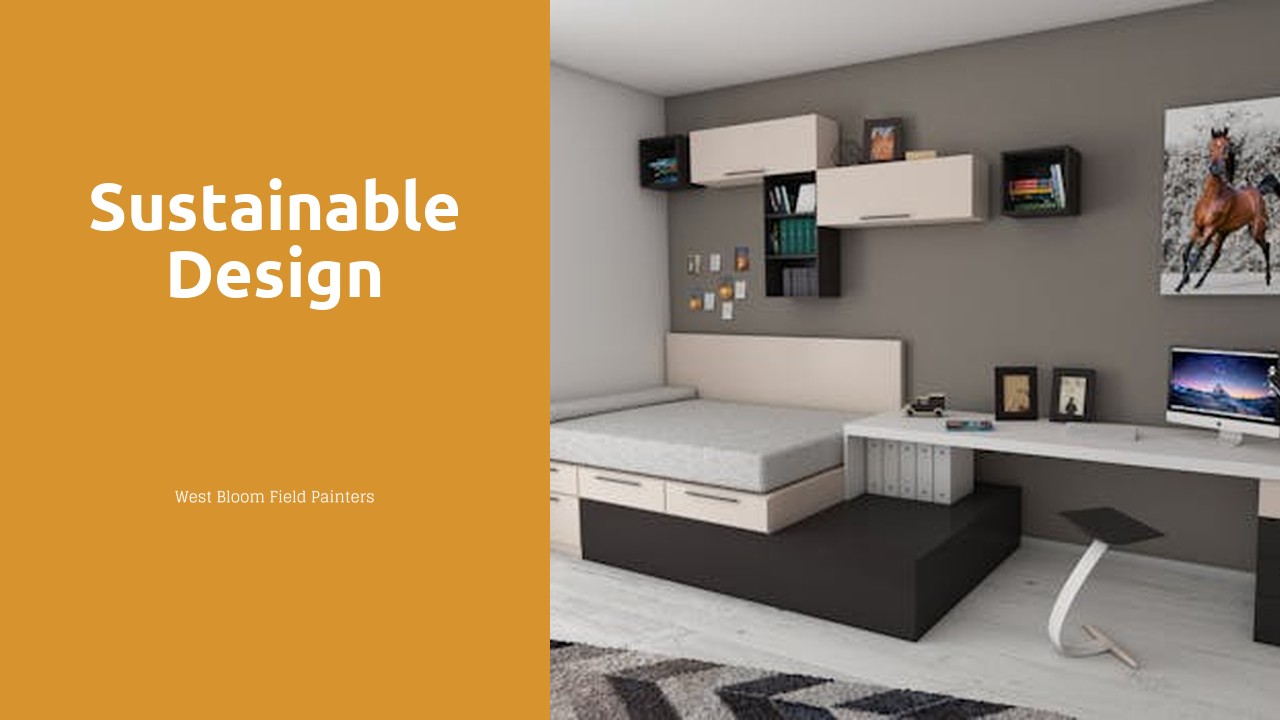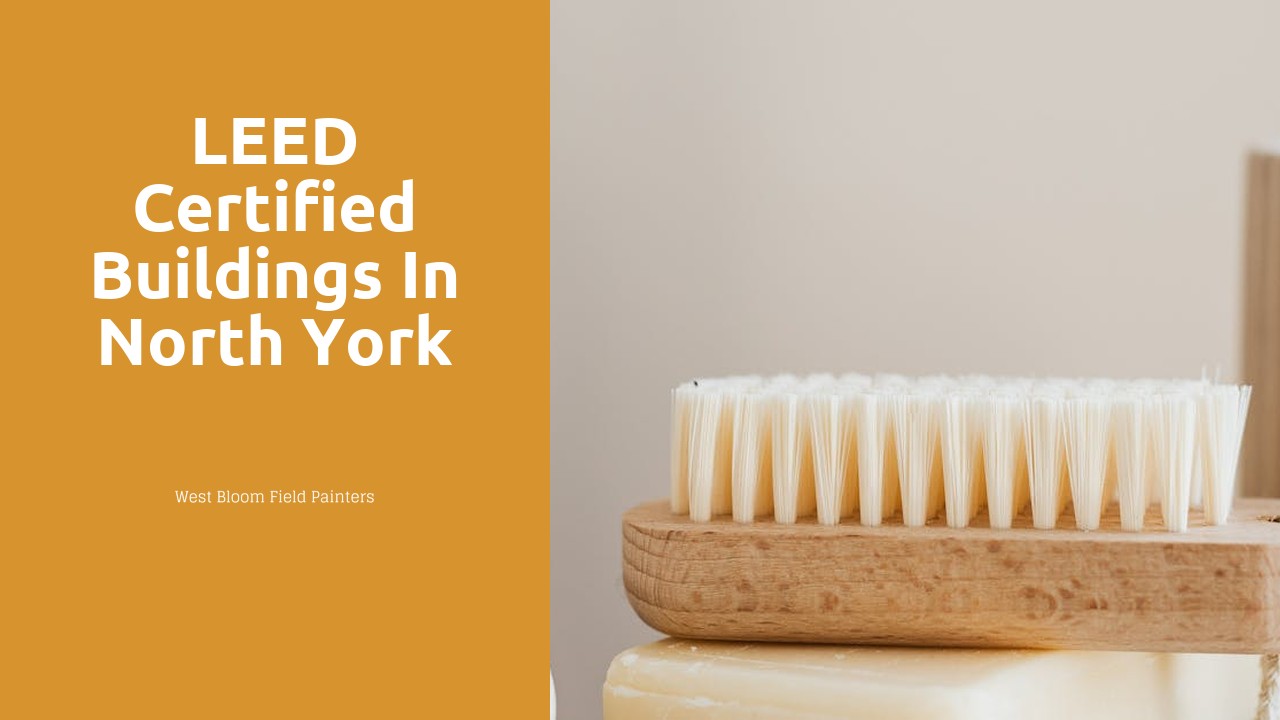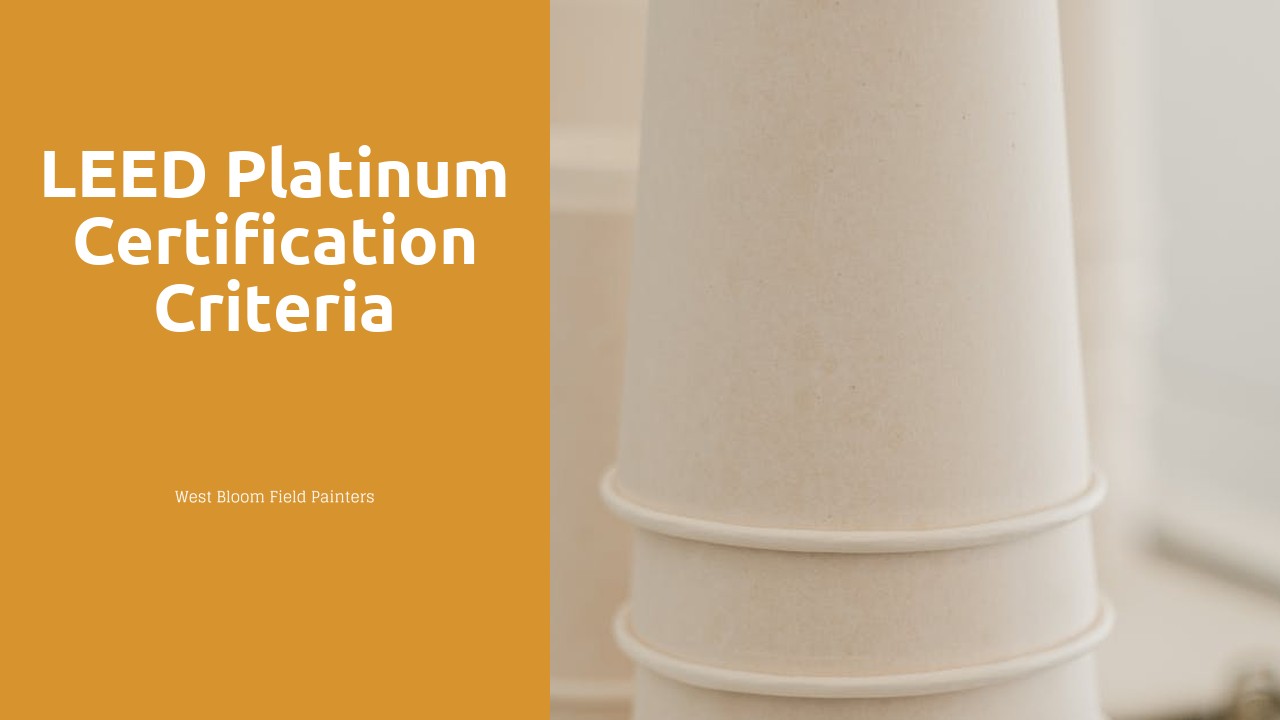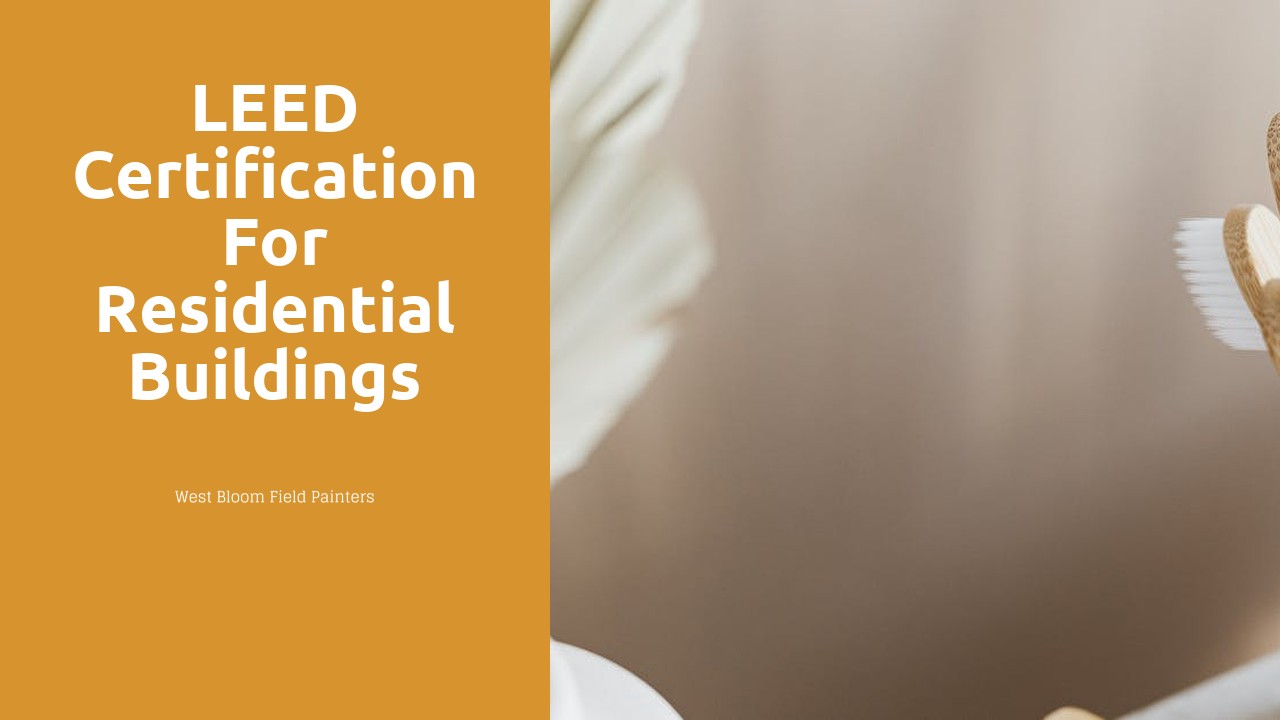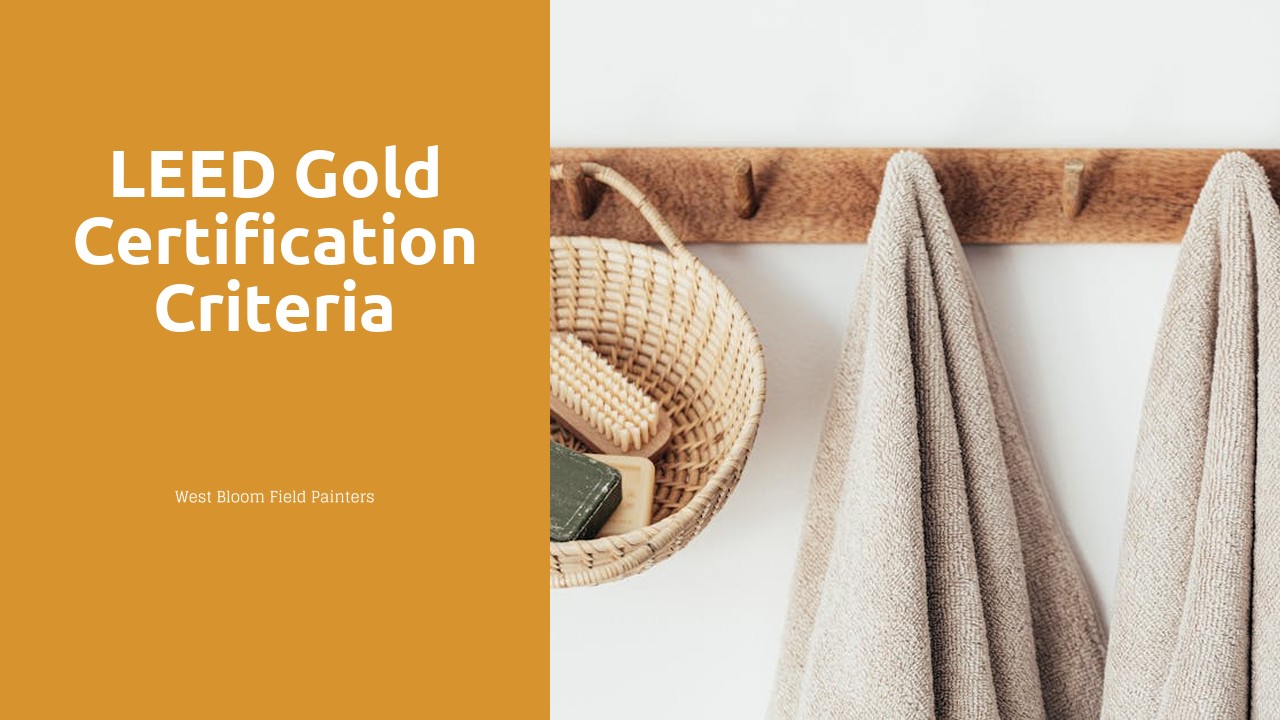
Table Of Contents
Innovation and Design Process in LEED Gold Certification
Innovation and design play a crucial role in achieving LEED Gold certification for buildings. Sustainable design in Whitchurch-Stouffville focuses on integrating environmentally friendly practices at every stage of the building process. This includes selecting materials that have lower environmental impacts, optimizing energy efficiency, and incorporating innovative technologies to minimize the building's carbon footprint.
Incorporating green building innovation ideas is essential in meeting the stringent criteria for LEED Gold certification. Designers and architects must explore creative solutions to enhance the building's performance in areas such as energy efficiency, water conservation, and indoor air quality. By prioritizing innovation and design excellence, buildings in Whitchurch-Stouffville can embody sustainable practices that benefit both the environment and the community.
Green Building Innovation Ideas
Green building innovation plays a crucial role in achieving LEED Gold certification, pushing the boundaries of what is possible in sustainable construction. In the context of sustainable design in Whitchurch-Stouffville, leveraging innovative ideas is essential to reduce environmental impact and enhance overall performance. From incorporating cutting-edge renewable energy systems to exploring advanced water conservation techniques, there is a multitude of opportunities to showcase creativity and forward-thinking in green building innovation within the region.
In the pursuit of LEED Gold certification, embracing innovative ideas can lead to significant advancements in sustainable design practices in Whitchurch-Stouffville. By integrating concepts such as passive design strategies, green roofs, and natural daylighting solutions, buildings can not only reduce their carbon footprint but also create healthier and more comfortable indoor environments for occupants. Through a commitment to pushing the boundaries of conventional construction methods and embracing sustainable design principles, Whitchurch-Stouffville can position itself as a leader in green building innovation within the broader sustainability movement.
Regional Priority Credits for LEED Gold Certification
Regional Priority Credits play a significant role in achieving LEED Gold Certification for sustainable buildings. These credits emphasize local environmental concerns and give added recognition to projects that address regional priorities. In Whitchurch-Stouffville, a focus on Sustainable Design is key to earning these credits, encouraging sustainable practices that benefit the local community and ecosystem.
When pursuing LEED Gold Certification, developers in Whitchurch-Stouffville must consider the specific environmental impact of their projects on the region. Factors such as water conservation, energy efficiency, and indoor air quality are crucial aspects of Sustainable Design in Whitchurch-Stouffville, contributing to the overall sustainability of the building and its surroundings. By incorporating these regional priorities into the project's design and construction, developers can demonstrate their commitment to creating environmentally responsible buildings that align with the needs of the local area.
Local Environmental Impact Considerations
Local environmental impact considerations play a crucial role in achieving LEED Gold certification. Sustainable design in Whitchurch-Stouffville focuses on minimizing the negative effects of construction and operation on the surrounding environment. This includes preserving natural habitats, reducing pollution, and utilizing eco-friendly materials to support long-term sustainability goals. By prioritizing these factors, buildings can contribute positively to the local ecosystem and community well-being.
Incorporating green building practices into local environmental impact considerations is essential for achieving LEED Gold certification. When developers prioritize energy efficiency, waste reduction, and green space preservation, they not only reduce the carbon footprint of the project but also create a healthier environment for residents and visitors. By aligning with regional sustainability goals and incorporating innovative technologies, buildings in Whitchurch-Stouffville can become leaders in sustainable design and set a positive example for future developments.
Monitoring and Performance Tracking for LEED Gold Certification
Ensuring continuous monitoring and performance tracking is essential in maintaining the sustainability goals set forth in the LEED Gold Certification process. By closely tracking energy and water usage, buildings can identify areas where improvements can be made to enhance efficiency and reduce environmental impact. Sustainable design in Whitchurch-Stouffville, as in many communities, relies heavily on ongoing monitoring to uphold the standards of green building practices.
Implementing a robust monitoring system not only benefits the environment but also contributes to cost savings for building owners over time. By analyzing data on energy and water usage, stakeholders can make informed decisions on upgrades or modifications that will further advance their sustainability objectives. Sustainable design in Whitchurch-Stouffville thrives when performance tracking becomes a routine practice, ingrained in the operations and maintenance of green buildings.
Energy and Water Usage Monitoring
Energy and water usage monitoring play a crucial role in ensuring the sustainability of buildings seeking LEED Gold certification. Sustainable design in Whitchurch-Stouffville emphasizes the importance of tracking energy and water consumption to identify opportunities for improvement and optimize resource efficiency. By monitoring usage patterns, building owners can better understand their environmental impact and implement strategies to reduce energy and water consumption, ultimately leading to cost savings and environmental benefits.
Incorporating energy and water monitoring systems into building management practices is a key requirement for achieving LEED Gold certification. Sustainable design in Whitchurch-Stouffville underscores the significance of real-time data collection and analysis to assess the building's performance and identify areas for enhancement. By continuously monitoring energy and water usage, building operators can make informed decisions, implement conservation measures, and demonstrate a commitment to sustainability in alignment with LEED Gold certification criteria.
FAQS
What is LEED Gold certification?
LEED Gold certification is a rating system for green buildings that signifies a high level of sustainability and environmental responsibility.
How can a building achieve LEED Gold certification?
To achieve LEED Gold certification, a building must meet specific criteria related to sustainable site development, water savings, energy efficiency, materials selection, and indoor environmental quality.
What is the role of innovation and design process in obtaining LEED Gold certification?
Innovation and design process play a crucial role in obtaining LEED Gold certification as they encourage creative solutions and strategies to enhance the overall sustainability of a building.
What are some green building innovation ideas that can help in achieving LEED Gold certification?
Green building innovation ideas include incorporating renewable energy sources, using recycled materials, implementing water-saving technologies, and promoting indoor air quality.
How do regional priority credits contribute to LEED Gold certification?
Regional priority credits recognize specific environmental priorities in different regions, encouraging projects to address local environmental challenges and contribute to sustainable development.
What are some considerations for local environmental impact in the context of LEED Gold certification?
Local environmental impact considerations include minimizing pollution, conserving natural resources, protecting ecosystems, and promoting community well-being.
Why is monitoring and performance tracking important for maintaining LEED Gold certification?
Monitoring and performance tracking help ensure that a building continues to meet the required sustainability standards over time, allowing for ongoing improvement and optimization.
How is energy and water usage monitored in the context of LEED Gold certification?
Energy and water usage are monitored through data collection, analysis, and reporting to identify areas for improvement and optimize resource efficiency in a LEED Gold-certified building.
